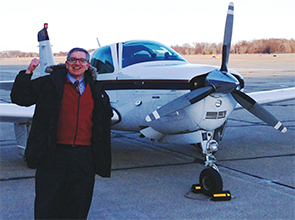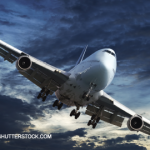
Howard Epstein, MD, vividly remembers their faces. There was the woman in her 50s with vasculitis, another in her 40s who needed surgery on her small intestine, a 30-something man with mytonic muscular dystrophy and a 13-year-old boy with a brain tumor—not to mention the handful of other sick children attending summer camp for kids with like illnesses.
On weekends, Dr. Epstein, a rheumatologist at the Cleveland (Ohio) Clinic, doubles as a pilot for Angel Flight Mid-Atlantic, which provides medical air transport for patients who need specialized medical evaluation, diagnosis, treatment or rehabilitation at medical facilities throughout Washington, D.C., Delaware, Kentucky, Maryland, Michigan, Ohio, Pennsylvania, Virginia and West Virginia. Since 2008, he has transported more than 45 patients to a variety of places on his own time and at his own expense.
Dr. Epstein will be the first to admit that he shies away from the limelight. He doesn’t want or need praise or accolades for his behind-the-scenes efforts. His life’s enjoyment, his life’s passion, is giving back to his community. Sounds a bit trite, but in his case, it’s as real as the lives he helps save.
Born to Fly
Dr. Epstein obtained his pilot’s license in the early 1970s, during the summer between high school graduation and his first year of college. In the following years, he flew to popular vacation spots like Cape Cod and Ft. Lauderdale and ate the occasional $100 hamburger—a term coined by pilots who fly out of state for lunch.
Then the demands of medical school grounded him for nearly 20 years. He didn’t fly again until 10 years into his medical career. He remembers the exact moment.
“It was a Saturday afternoon,” he recalls. “It was a really beautiful [day], and I had just finished seeing patients. I said, ‘OK, this is the time.’ I drove to the local airport … and resumed my flight training.”
His pilot license was still valid; however, his skills needed refreshing. After completing 15 hours of training with a certified flight instructor, he spent an additional four months becoming an instrument-rated pilot, learning how to fly by instruments without visual references to the ground or other landmarks. This rating allows pilots freedom to fly to more places under adverse weather conditions, such as through clouds, rain or fog.
As a graduation present, he replaced his first plane—a four-seat, single-engine Cessna 182 that he had purchased in 1998 and leased to the local flight school for pilot training—with a new Beechcraft Bonanza, a six-seat, single-engine plane that he still uses today.


